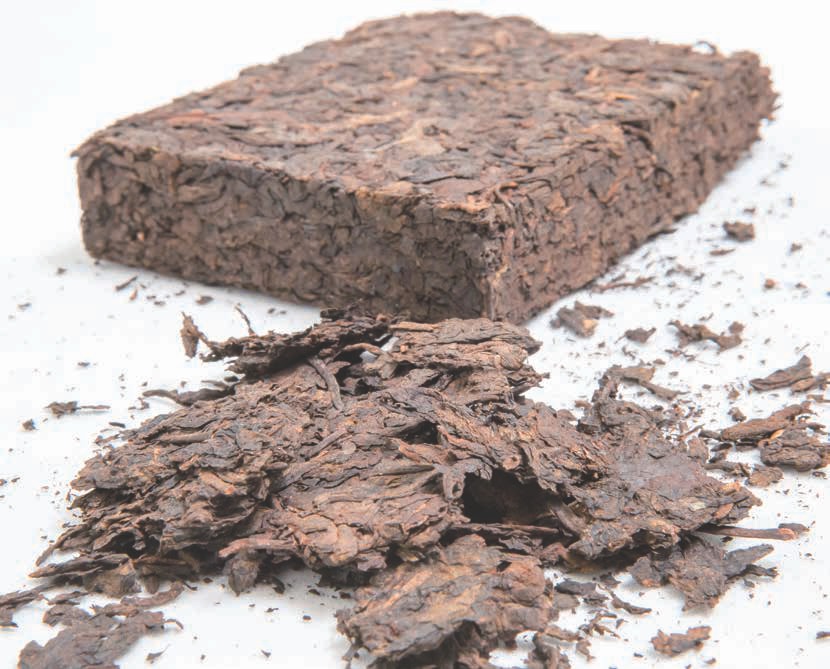
 |
|

The first of our 2015 Light Meets Life cakes is here! We are unbelievably excited about all of our cakes this year. The others will come shortly. This one came early because it is an aged shou, and one of our all-time favorites, which we shared with you in February. That's right, the first of our teas this year is Inner Path!
When we contacted our brother saying that Inner Path was one of our favorite shou teas and that we'd like to make something similar this year, he got back to us suggesting that we just take Inner Path itself, since there was around 350 cakes left. We quickly purchased them and had them wrapped with Light Meets Life wrappers! We are so happy that this year's teas are all moving up in quality from the previous two years' puerh drives. Inner Path is such an excellent tea, and we are all very fortunate to have the chance to get some more of this amazing tea. Each 250-gram brick will be a minimum donation of US 40$ + shipping. Check the website for more information!
Inner Path is a great blend of various teas from Mengku, Lincang, Yunnan. The tea was purchased by a small boutique for private production in 2007. The leaves were of various sizes, from grade three to nine. This large spectrum, from smaller buds to larger, old-growth leaves was common back in the day. (7572 is one famous example, which we have sent out in Global Tea Hut. It has an average leaf size of 7.) This maocha was aged in Jinggu for five years before it was piled, which is unique for modern shou tea. Jinggu is a decent place to age tea in Yunnan, as it is more humid than the capital, or even Mengku where this tea originated.
The five-year-old maocha was fermented/piled to a lesser degree than most shou teas nowadays, leaving room for change and growth. This also means that the process was watched and managed with more care and skill. Stopping the fermentation earlier isn't always the best way to make shou, but it does ensure a greater degree of concern and care for the process, which has to be watched constantly as a result. Also, the reason that inferior, left-over, heavily blended teas have always been used to make shou puerh is that it is inferior to aged sheng. It lacks the vibrancy and Qi, and much of the healing medicine can be lost in the piling of puerh tea. Shou tea is therefore cheaper than young or especially aged sheng puerh. For that reason, good oldgrowth material is rarely used, since it would mean that a vendor had to sell their shou cakes for the same price as sheng, which few customers will pay. Some would also say it would be a waste of quality leaves to pile them, as their potential is much greater as aged sheng.
It is also difficult to find truly clean, chemical-free shou puerh tea, since it is often made up of leftovers, usually from various regions. The exceptions are always small productions made by tea lovers. This shou is made from a small batch of better leaves, including old-growth, intentionally aged and piled. And aged in an environment that was suitable for their evolution. Part of why this cake was able to have oldgrowth tea and still remain affordable is that the leaves are larger, lower-down, thinner and bigger leaves, called "huang pian, 黃片". In our tea, these were blended with other kinds of leaves, bringing some depth and Qi and a nice, balanced flavor.
While aged maocha can be piled to make shou, you have to compress the tea right after the piling. Aged loose-leaf shou can't be compressed, as the tea leaves would resist the steam and not hold shape. Our tea was aged in Jinggu for five years and then piled for around thirty days before compression, all in Jinggu County. Then, the tea lovers producing these teas aged the cakes themselves for another two years before selling them and/or sharing them with friends. So the tea is seven or eight years old from one perspective - if you think of its birth in terms of harvest - or, only three years old if you count from when it was compressed. Either way, the whole process, from selecting and blending the teas to aging them in Jinggu, then in piling them with more intention and for only a month, and then in aging the cakes themselves for two years to allow them to mellow out and lose the piling flavors - all of this was done with a love for Tea and a desire to make a great shou puerh. It's no wonder this is one of our favorites!
This magical tea lights up a day, with a sweet and thick liquor that tastes of camphor, mushrooms and Taiwanese black sugar. We find the Qi of this magical tea to be surprisingly uplifting for a shou, though we still feel grounded. It isn't as Yin as most shou. It is great in the afternoon or early evening, helping transition from day to night. Drinking it really feels like a journey inward...

